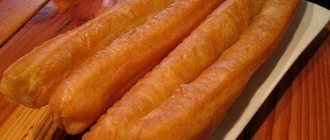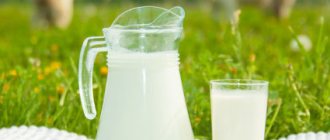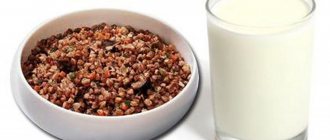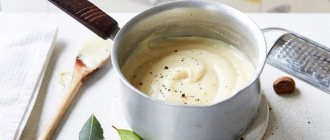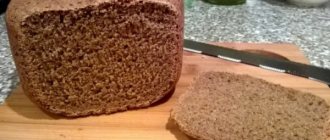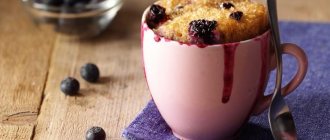For several years in a row, both in the field of sports and proper nutrition, there has been increased attention to such a substance as gluten. Experts have not come to a consensus when answering the question: is this protein harmful to the human body? However, there is a known disease called celiac disease, in which even 25 mg of gluten is enough to cause health problems.
In addition, many people, in particular bodybuilders, suffer from gluten intolerance and allergies to the element. Therefore, many doctors today prescribe gluten-free diets, which we will talk about.
The importance of diets. A little research
Gluten or gluten is a protein that has the ability to stick together. The largest amount of the element can be found in wheat, also in pasta, meat products and dairy products. You can see a more complete list.
Gluten is also added as a preservative to various products to increase the shelf life of products. In addition, the US Food and Drug Administration (FDA) allows small amounts of gluten in gluten-free products.
Often, even in childhood, many children experience intolerance to the substance. This is explained by the fact that the child’s body does not have enough enzyme that hydrolyzes the protein completely (breaks down the molecules of the substance into amino acids). With age, the disease can go away or develop into an allergy to gluten and a more serious disease - celiac disease.
People who experience problems after taking gluten must know gluten-free foods to protect their health. And for some, a gluten-free diet is the only chance to live a full life.
Dozens of studies have not answered the question of how much of a substance consumed can be safe for human health. Some experts suggest that 620 mg per day (about one-fifth of a piece of bread) is quite acceptable, while other scientists argue that even 10 mg of gluten per day can have serious consequences.
This is due to the fact that in people with celiac disease, every time they eat foods with gluten, the amount of gluten in the body accumulates, which leads to a worsening of the patient's condition. As a result, intestinal villi develop atrophy.
Scientists at the University of Maryland found that in patients whose diet included 50 mg of gluten daily, villous atrophy was observed as early as 90 days. 10 mg of gluten showed the lowest percentage of disease development.
Thus, according to preliminary data from experts from the USA, we can conclude that the maximum amount of protein intake for patients with celiac disease and for people with gluten allergies is 10 mg per day. However, this indicator is individual for each person.
It is important for patients to know which gluten-free foods they can eat. In addition, they should consult a doctor so that he can prescribe the correct diet based on the test data.
Gluten-free diet
If you want to switch to a gluten-free diet, below we will provide you with a complete list of products without this protein:
| PRODUCTS WITH NO GLUTEN: |
| Bread, baked goods made with gluten-free flour; |
| Corn, all its types: grits, flour, canned corn, porridge; |
| Buckwheat porridge, flax, quinoa, soybeans, millet, amaranth; |
| Natural dairy products: yogurt, cheese, margarine, cream, butter; |
| Rice: brown, white, basmati, wild and other types; |
| Canola vegetable oil; |
| Distilled vinegar; |
| Distilled alcohol; |
| Food starch, tapioca starch; |
| Natural spices; |
| Potato flour; |
| Lactic and malic acid; |
| Vanillin; |
| Gluten-free flour from nuts, coconut, beans. |
For your convenience, below is a table and a list of manufacturers of gluten-free products. Material provided by the website of the St. Petersburg Society, created by patients with celiac disease under the name “Emilia”. All products were tested in Peter's laboratory.
Milk
- Butter “33 cows” from the Ochakovsky plant;
- Zhar Pechka oil produced at the Novosibirsk plant;
- Sour cream, fat content 20%, in the city of Barnaul;
- Sour cream from Rosta Agro Export;
- "Lambert" cheese made using Moscow technologies;
- Processed cheese "Yantar", in Moscow;
- Finnish cheese “Polar 15%”;
- “Miracle”, glazed cheese from Wimm-Bill-Dann;
- “Piskarevsky”, cottage cheese from the St. Petersburg plant;
- Yogurt "Ehrmann";
- Strawberry yogurt “Immunelle” also from Wimm-Bill-Dann;
- Ice cream from: “Gold Standard”, “Exotic”, “Tycoon”, “Torzhestvo”.
Flour products
- St. Petersburg buckwheat flour “Kashevar”;
- Rice bread from TD Dietproduct;
- Bread "Grata", produced in Samara;
- Corn flakes from a food plant in Kuntsevo;
- Corn sticks made in the city of Ryazan;
- Pressed yeast from the Food Processing Plant.
Sauces and seasonings
- "Persona", ketchup;
- Mayonnaise "Calve" from Tula;
- Horseradish "Bastion";
- Tomato paste “Pomodorka”, China;
- Seasoning from Croatia “Vegeta”.
Meat products
- Crab "Vici";
- Stewed beef, Salyut meat processing plant;
- Doctor's sausage made in Tsaritsino;
- Bavarian sausages from Pit-Product.
Other gluten-free products
- “Drakosha” toothpaste, Yekaterinburg;
- "Ferrosan", Multitabs, manufacturer Denmark;
- Tablets with different flavors "Sana-sol" from Austria;
- Ambrobene syrup from Merkle GmbH, country of origin - Germany;
- "Novopassit";
- Antigrippin tablets from France.
Gluten-free diet menu
Having the permitted and prohibited lists, we will create a weekly menu.
We will offer 7 options.
- Rice porridge with berries, a slice of corn bread with cheese, coffee with milk.
- Cottage cheese with pieces of fruit, rice cakes with honey, coffee.
- Scrambled eggs, gluten-free bread with cheese, tea.
- Buckwheat pancakes with honey, milk.
- Corn flakes with plain yogurt, egg, apple, tea.
- Cheese pancakes with potato starch, milk.
- Buckwheat porridge, rice flour bun with cheese, coffee.
- Chicken broth with egg, pilaf, radish salad, juice.
- Borscht with meat, meatballs with gluten-free pasta, carrot salad, dried fruit compote.
- Cabbage soup, baked pollock with rice, beet salad, green tea.
- Vegetable soup, turkey breast with beans, blueberry jelly.
- Fish soup, chicken soufflé with lentils and pickled cucumber, juice.
- Cheese soup with spinach, pike poached in oil with boiled potatoes, cabbage salad, compote.
- Mushroom soup, lamb with stewed cabbage, fruit drink.
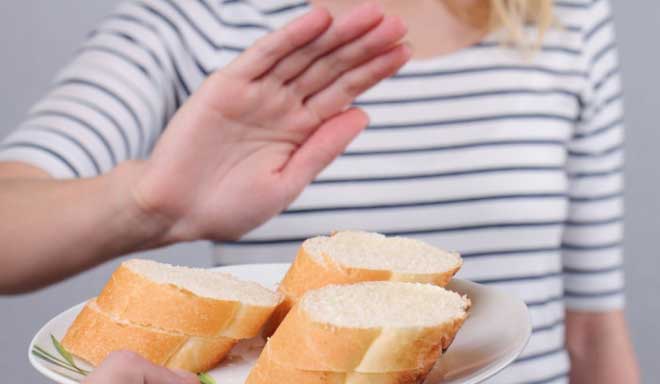
- Baked apple with honey.
- Curd mass with apricot puree.
- Mamalyga with strawberries, kefir.
- Fruit salad with yogurt.
- Cheese, 2 fruits.
- Rice flour cookies, honey, ayran.
- Nuts, fruits, yogurt.
- Stuffed cabbage rolls with sour cream, tomato juice.
- Ratatouille, pork chop, milk tea.
- Baked potatoes with salted salmon, coffee.
- Millet porridge with pumpkin, fermented baked milk.
- Stuffed peppers, jelly.
- Fried potatoes with mushrooms and onions, tea.
- Stewed beans with beef in tomato, coffee with milk.
The weekly menu presented for a gluten-free diet will help diversify your diet by combining different options for the proposed dishes and finding new ones.
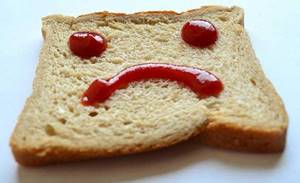
Gluten free diets
Diet No. 4, developed by gastroenterologists, is especially suitable for people with problems in the digestive system. It completely excludes products from barley, wheat, oats and rye. This includes both cereals and flour with baked goods. Breading with the mentioned flour is prohibited.
The patient's diet should contain the optimal amount of proteins (on average 125 g), fats (100 g), minerals and vitamins. There are no restrictions on carbohydrate intake - you can consume up to 350 grams. in a day. It is recommended to boil or steam the food. Doctors also advise the amount of salt not to exceed 8 grams.
Allowed foods for celiac disease
| Product | Squirrel | Fat | Kcal. |
| VEGETABLES: | |||
| Legumes | 9 | 2 | 168 |
| Cabbage | 2 | 0,1 | 27 |
| cucumbers | 0,8 | 0,1 | 15 |
| Potato | 2 | 0,4 | 80 |
| FRUITS: | |||
| Apples | 0,5 | 0,4 | 45 |
| Pears | 0,4 | 0,2 | 43 |
| Oranges | 0,8 | 0,2 | 37 |
| Nuts | 16 | 41 | 502 |
| Dried fruits | 2,2 | 0,5 | 286 |
| GREATS: | |||
| Buckwheat | 12,7 | 3,4 | 312 |
| Corn | 8,2 | 1,1 | 338 |
| Rice | 6,8 | 0,8 | 345 |
| Millet | 11,6 | 3,2 | 349 |
| FLOUR: | |||
| Diet corn | 7,3 | 1,4 | 334 |
| Walnut | 50,1 | 1,5 | 334 |
| Pumpkin | 32 | 9 | 306 |
| DAIRY PRODUCTS: | |||
| Milk | 3,3 | 3,6 | 65 |
| Kefir | 3,5 | 2 | 52 |
| Cottage cheese | 17,3 | 6 | 123 |
| MEAT/FISH PRODUCTS: | |||
| Boiled beef | 25,9 | 17 | 256 |
| Boiled chicken | 25 | 8 | 174 |
| Red caviar | 32,2 | 16 | 264 |
| Sprats | 17 | 33,2 | 364 |
| Rabbit | 21,2 | 8,1 | 157 |
Prohibited Products
- Wheat products, rye, barley, oats;
- Canned meat containing flour, sausages, frankfurters, ham;
- Breaded both meat and fish cutlets, canned fish with flour;
- Baked goods: biscuits, cookies made from wheat and oat flour;
- Canned vegetables;
- Confectionery products: dragees, chocolate, caramel, candies;
- Bananas (there is controversial information about them. Some experts prohibit eating them, others do not. They are often prohibited due to a “cross-allergic reaction.” This is when a person with celiac disease has the same reaction to a banana as to gluten. In most cases, they can be included in the diet).
- Soda, kvass, beer, vodka;
- Dates;
- Sauces, ketchups, mayonnaise.
List of products for gluten intolerance
Posted by:
Daria Mikhailova
Healthy lifestyle journalist, fitness trainer, nutritionist
Gluten intolerance is the body's inability to digest gluten, found in wheat and some other grains. Gluten intolerance can range from mild intolerance to a condition known as celiac disease.
Products containing gluten
Products that traditionally contain gluten include:
- pasta
- bread
- cookie
- store-bought sauces
Below we provide a list of foods to avoid:
Wheat is a staple of the Western diet and is enemy #1 for those with gluten intolerance.
In addition to wheat, all its derivatives should also be excluded:
- wheat starch
- wheat bran
- wheat germ
- couscous
- pasta of soft varieties, durum wheat
- whole grain pasta
- emmer
- gliadin
- kamut
- matzo
- semolina
- spelled
- bulgur
The list of prohibited foods does not end with wheat. Other prohibited products include:
- barley
- oats (oats themselves do not contain gluten, but they are often processed in facilities that produce gluten-containing grains and therefore the oats may be “contaminated”).
- rye
- triticale
Gluten may also appear as an ingredient in:
- barley malt
- store bought chicken broth
- malt vinegar
- sausages
- store-bought sauces and some salad dressings
- soy sauce
Gluten Free Products
Here is a list of some products that do not contain gluten:
- Fruits and vegetables
- beans
- seeds
- legumes
- nuts
- potato
- eggs
- dairy
- oils and vinegars
- corn
- rice
- fish
- meat
- chicken
- seafood
- amaranth
- buckwheat
- millet
- quinoa
- rice
- sorghum
- soybeans
- tapioca
- buckwheat
- corn
- rice
- quinoa
Many grain products are gluten-free:
For baking, use flour substitutes. These may include:
You will need xanthan gum or guar gum as a gluten substitute when making baked goods.
This list can be daunting at first, but for many, the benefits far outweigh the inconveniences.
How to eat in a restaurant?
Eating out can be a challenge if you have a gluten intolerance, but it won't be difficult if you stick to the same principles you eat at home, such as grilled meats and steamed vegetables.
Foods to avoid in restaurants include certain sauces, such as bechamel. Be sure to communicate your preferences to the waiter in advance. Nowadays, many restaurants state that they are gluten-free.
Forecast
If you have celiac disease, a gluten-free diet is essential for your health.
A gluten-free diet may seem overwhelming at first, but with time and a little effort, it can become the foundation of your daily diet. Comments to the article 0

